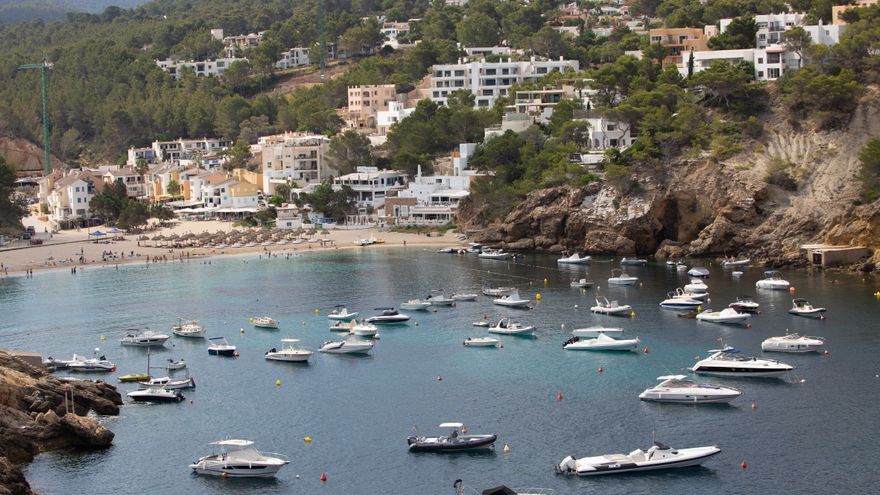The posidonia meadows are in clearly in “regression” in Cala Vedella, in the municipality of Sant Josep, and even up to 55% of the coverage of this plant has disappeared in some areas of this natural bay, according to the latest environmental study prepared by GEN-GOB, which has been funded by the IbizaPreservation Foundation and was presented this morning at the municipal offices of Sant Jordi. The aim of the study is to assess the conservation status of these meadows and the temporal evolution of its density, coverage and mortality. GEN started this work in 2019 with the installation of three monitoring stations at different depths of Cala Vedella. At the moment, the monitoring is limited to four years. Xisco Sobrado, marine technician of this environmental organization, believes that at least another year would be necessary and that the ideal would be to collect data for a decade.
The results of this study indicate that the Posidonia oceanica located at station II of Cala Vedella is “in a poor state of conservation, with an average of 29% of dead meadows”, a percentage that in some areas reaches “up to 55%”. There “the density is low compared to the reference literature and no increase in the area occupied by grassland has been seen since the beginning of the study in 2019”.
The results of that study indicate that the Posidonia oceanica located in station II of Cala Vedella is “in a poor state of conservation, with an average of 29% of dead grassland”, a percentage that in some areas reaches “up to 55%”
In stations I and III they found “a better state of conservation”, with more coverage and less amount of dead grassland: “One possible reason is that these areas have less anchoring pressure [from leisure boats] than at station II,” the study details. For example, station I is located within the summer bathing zone, and station III is located in the outer zone, where there is less anchoring pressure.
However, stations I and III have lost meadow since 2019, the report warns: “This fact may indicate that over the years the coverage of Posidonia oceanica is being lost in all stations”. A longer monitoring time is needed (those 10 years to which Sobrado alludes) to “obtain a good analysis of the evolution of the ecosystem”, that is, to know what the trend is, which everything suggests is not very good.
The study also suggests that although there has been an increase in the density of Posidonia, it is “totally insufficient to regenerate the meadow, as indicated by the very high percentage” of dead plants detected in station II. In this sense, GEN says that “recovery may take centuries, since posidonia is very slow growing”, from one to seven centimeters per year.
The study also suggests that although there has been an increase in the density of posidonia, it is “totally insufficient to regenerate the meadow”
For the full article, please visit Diario de Ibiza website here.


